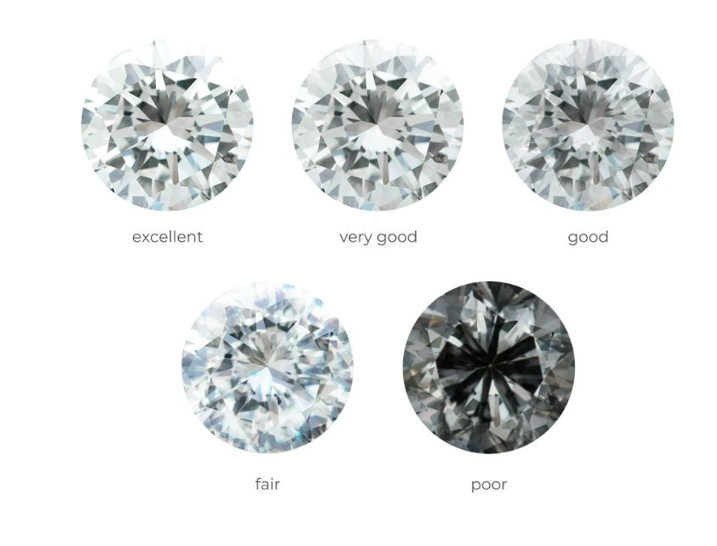One of the most valuable and sought-after gemstones in the world is the diamond. People from all walks of life have treasured them for generations because of their beauty, uniqueness, and durability. Diamonds are formed entirely of carbon, and because of their special crystal structure, they have an unmistakable glitter and brilliance. They can be found in a range of colours, from colourless to pink, yellow, and blue, and are mined from the depths of the earth. Since ancient times, diamonds have been used in jewellery as a store of value, as well as a symbol of love and fidelity. Diamonds are still a common choice for wedding bands, engagement rings, and other special occasion jewellery nowadays. Whether worn as a love sign or just admired for,
Choosing a diamond can be an overwhelming task, especially if you don’t have any prior knowledge about diamonds. Here’s a step-by-step guide to help you choose the perfect diamond.
Steps choose a diamond
- Determine your budget: Diamonds can range in price from a few hundred dollars to tens of thousands of dollars, so it’s essential to have a budget in mind before you start your search. Knowing how much you’re willing to spend will help you narrow down your options and prevent you from overspending.
- Select the shape: Each person has a different preference for a diamond’s shape. The round, princess, cushion, and emerald shapes are the most common. While princess-cut diamonds are more contemporary and have a square shape, round diamonds are the most brilliant and sparkle. While emerald-cut diamonds have a more refined and classic appearance, cushion-cut diamonds have a more retro aesthetic.
- Think about the 4Cs: The 4Cs are the most crucial elements to take into account while selecting a diamond. They stand for carat weight, cut, clarity, and colour.Cut: A well-cut diamond will have excellent brilliance and sparkle. The cut grade is an essential factor in determining a diamond’s beauty and value.
- Clarity: The clarity of a diamond refers to the number and size of inclusions or blemishes in the stone. The fewer inclusions, the higher the clarity grade.Color: The color of a diamond can range from colorless to light yellow. The less color a diamond has, the higher its value.
- Carat weight: The carat weight of a diamond refers to how much it weighs. The higher the carat weight, the more expensive the diamond.selecting a certification Selecting a diamond that has received certification from a recognised third-party agency, like the Gemological Institute of America (GIA), is essential. You can learn more about the diamond’s 4Cs and have the diamond’s quality guaranteed by a certification.
- Choose the setting: Once you have chosen the diamond, you need to choose a setting. The setting can affect the way the diamond looks, so it’s important to choose one that complements the diamond’s shape and size.
Purchase from a trustworthy jeweller: It’s crucial to purchase a diamond from a trustworthy jeweller who can offer you a certification and a guarantee. In addition to having a solid reputation, a respectable jeweller would be happy to address any queries you may have regarding the diamond.
- Consider the fluorescence of the diamond: The term “fluorescence” describes a diamond’s propensity to give off a gentle glow when exposed to UV light. Strong fluorescence in some diamonds can have an impact on how they look. When selecting a diamond, it’s crucial to take fluorescence into account and pick one with a level of fluorescence that appeals to you.
- Think about the symmetry and proportions of the diamond: A diamond’s beauty is greatly influenced by its symmetry and proportions. A diamond with proper proportions will look balanced and reflect light in an appealing way. The evenness of a diamond’s facets and the alignment of its angles are referred to as its symmetry.
- Consider the diamond’s shape variations: While the most popular diamond shapes are round, princess, cushion, and emerald, there are many other diamond shapes to choose from, including pear, marquise, oval, and heart. Each shape has its unique characteristics and can be a beautiful choice, depending on your personal style.
- Take into account the proportions and symmetry of the diamond: Important aspects of a diamond’s beauty are its symmetry and dimensions. A diamond that is proportionately correct will appear balanced and reflect light in a beautiful way. The evenness of a diamond’s facets and the harmony of its angles are considered to be the diamond’s symmetry.
- Think about the diamond’s general appearance: In the end, the most crucial element in selecting a diamond is its general appearance. A diamond should complement your unique style and have a lovely brightness and lustre. Spend some time selecting a diamond that you will be happy to wear for years to come and that you will be pleased to wear.
Conclusion
Finally, selecting a diamond necessitates some investigation and careful consideration of the 4Cs. These procedures can help you find a diamond that matches your needs in terms of price, cut, and colour.
